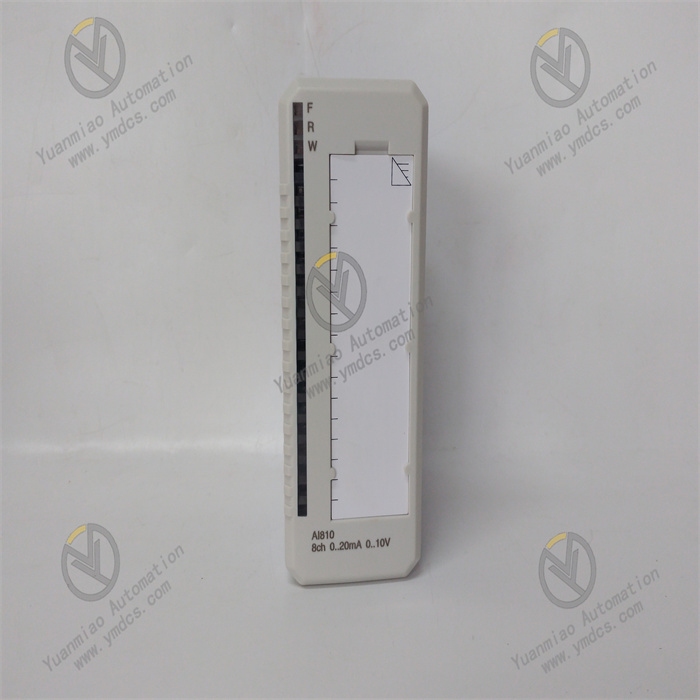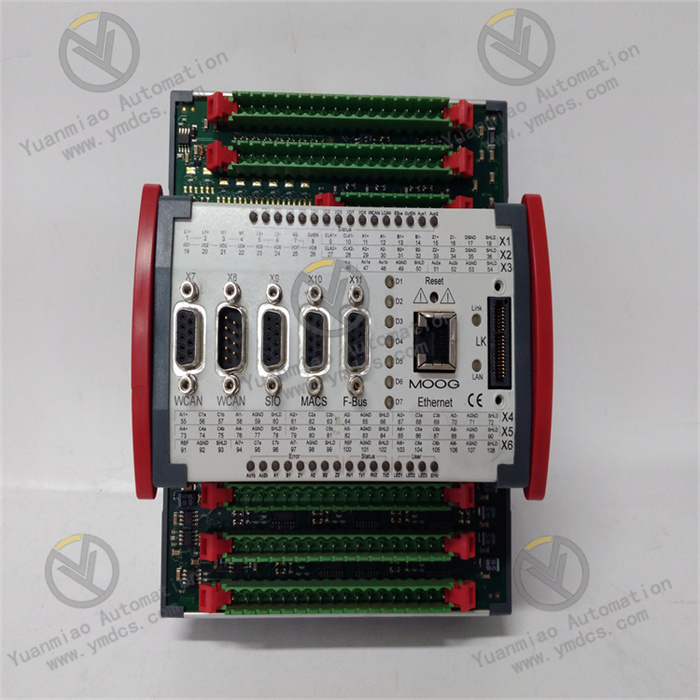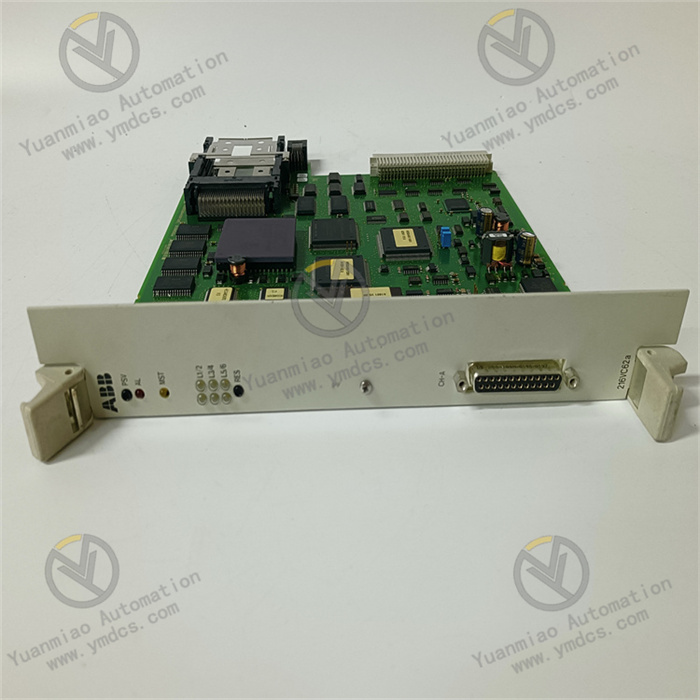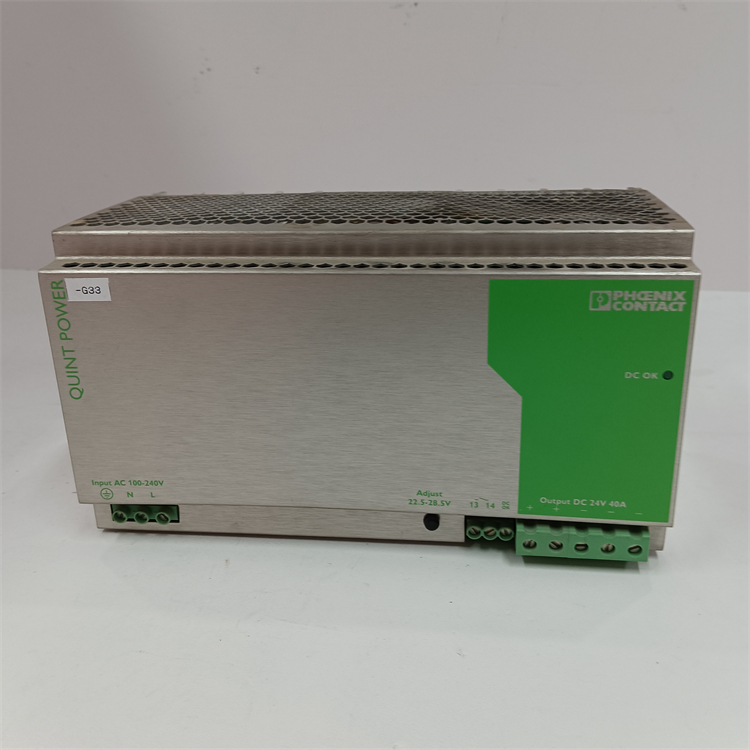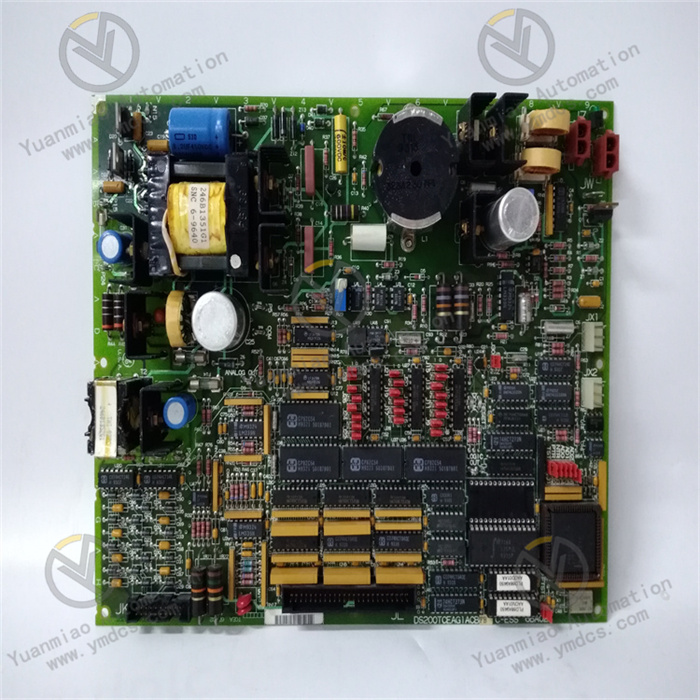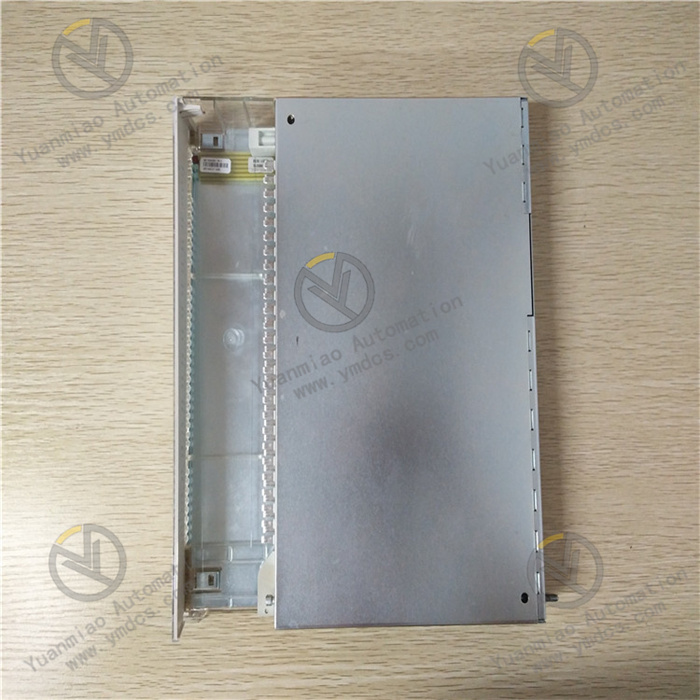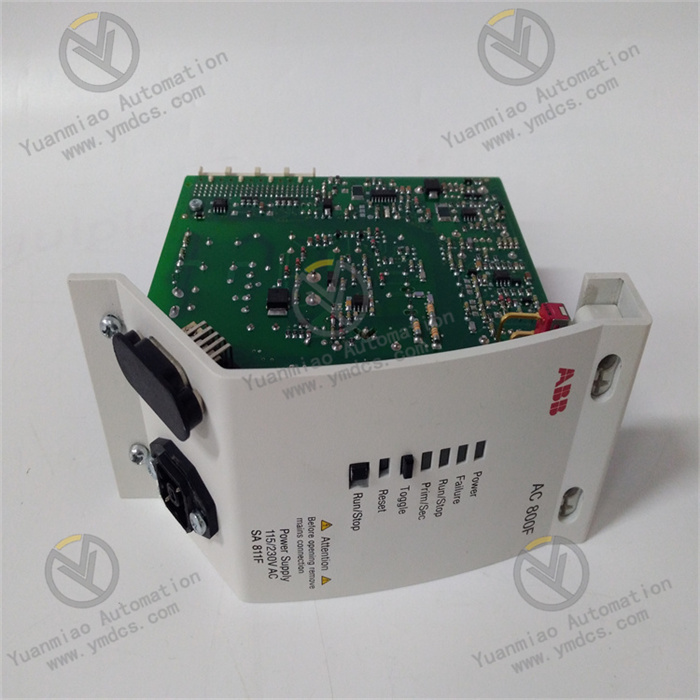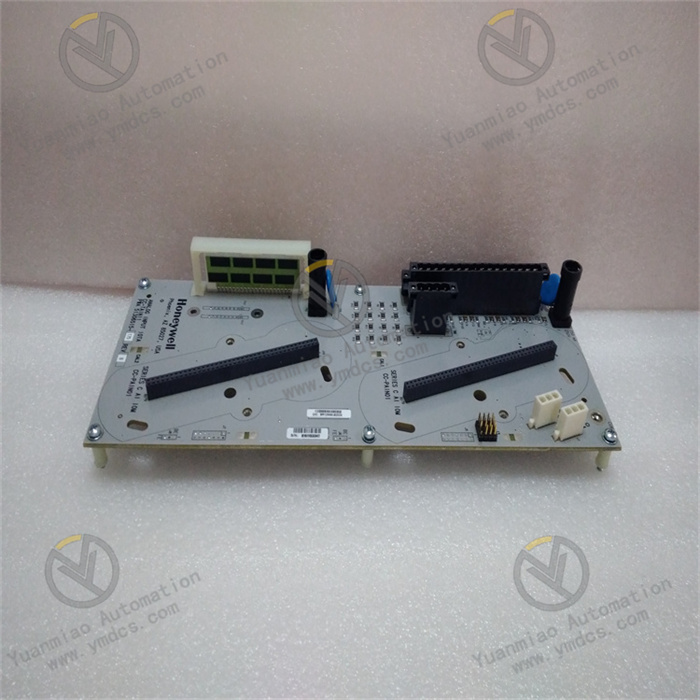Description
GE DS200FHVAG1ABA
The GE DS200FHVAG1ABA is a key analog input module for the Mark VIe series gas turbine/steam turbine control system. Its core positioning is a "high-precision analog signal acquisition unit for large rotating machinery", focusing on solving the problems of accurate acquisition and real-time transmission of continuously changing physical quantities such as temperature, pressure, flow rate, and vibration during the operation of large power equipment like gas turbines, steam turbines, and generators. This module is highly compatible with the GE Mark VIe control system, adopting a high-precision signal conversion circuit, a high-density channel design, and an industrial-grade redundant architecture. It undertakes the core task of converting analog signals (voltage, current, millivolt-level signals) output by on-site thermocouples, thermal resistors, pressure transmitters, vibration sensors, etc., into digital signals recognizable by the control system, and transmitting them to the controller at high speed through the system backplane bus. It provides highly reliable analog data support for unit operation status monitoring, closed-loop control, fault early warning, and performance optimization.
As a core module in the Mark VIe series for high-precision acquisition scenarios, the DS200FHVAG1ABA has core advantages including 16-channel high-precision acquisition, wide-range signal compatibility, strong environmental adaptability, and redundant fault-tolerant design. It can realize centralized acquisition of multiple types of analog signals without additional signal conditioning modules, effectively improving the integration of the control system and the accuracy of data acquisition. It is widely used in large rotating machinery control systems in fields such as thermal power generation, petrochemical industry, and aerospace power. Typical application scenarios include gas turbine cylinder temperature acquisition in thermal power plants, steam pressure monitoring of steam turbines, generator bearing vibration signal acquisition, and compressor flow rate precision detection. The module features seamless compatibility with the Mark VIe system, 16-channel high-precision conversion, multi-type signal adaptation, industrial-grade anti-interference, and redundant backup. It can adapt to harsh industrial environments such as high temperature, high vibration, and strong electromagnetic interference, fully meeting the high requirements of large power equipment for analog signal acquisition accuracy, real-time performance, and stability.

Adopting the VME64x architecture specially developed for the GE Mark VIe control system, it achieves full-dimensional deep compatibility of hardware and software, significantly improving deployment efficiency and operational stability. The module can be directly inserted into the VME64x backplane of the Mark VIe system's standard rack, enabling high-speed data interaction with the controller through the backplane bus without additional communication adapters or signal conditioning modules. Physical installation only requires two steps: rack insertion and signal wiring, reducing installation time by 40% compared with traditional modules. After being connected to the system, the controller can automatically identify the module model, firmware version, and channel configuration information via the backplane bus, eliminating the need for engineers to manually add devices. The real-time status of the module and 16 channels can be directly displayed in the Mark VIe Control Studio software, simplifying the equipment management process. It supports hot swapping, compliant with the Mark VIe system's hot swap specifications, allowing the module to be directly plugged in/out for maintenance or replacement without shutting down the unit. Combined with the system's redundant design, it realizes "zero-downtime" maintenance, making it particularly suitable for continuous operation scenarios of critical equipment such as gas turbines and generators.
Using a 24-bit high-precision AD conversion chip and an optimized signal conditioning circuit, it achieves ultra-high-precision conversion of analog signals, providing reliable data support for the precise control of large power equipment. The acquisition accuracy of different signal types is at the industry-leading level: the accuracy of current/voltage signals reaches ±0.05% FS (e.g., the absolute error is ≤0.005V when acquiring 0-10V voltage signals, which can accurately capture subtle changes in parameters such as pressure and flow rate); the accuracy of thermocouple signals reaches ±0.1% FS + 0.3℃, and the accuracy of thermal resistor signals reaches ±0.05% FS + 0.1℃. In gas turbine cylinder temperature monitoring, it can achieve a temperature acquisition accuracy of ±0.1℃, ensuring that the unit's thermal efficiency is controlled within the optimal range. It has a built-in high-precision temperature compensation circuit and is equipped with an intelligent cold junction compensation function for thermocouple signals. Powered by an external auxiliary DC 24V power supply, it can automatically offset the impact of ambient temperature changes on thermocouple acquisition, with a compensation error of ≤0.1℃, eliminating the need for additional cold junction compensation modules. It supports software automatic calibration and manual calibration, with a calibration cycle extendable to 12 months. The drift error during long-term use is ≤0.01% FS/year, ensuring the stability of acquisition accuracy.
Adopting a composite design of 16-channel centralized acquisition and grouping of every 4 channels, it balances the needs of high-density acquisition and flexible configuration, adapting to diverse industrial scenarios. The 16 channels can be independently configured into multiple signal types such as current, voltage, thermocouple, and thermal resistor. For example, in a steam turbine control system, channels 1-4 can be configured as PT100 thermal resistors to collect bearing temperature, channels 5-8 as 4-20mA current signals to collect steam pressure, channels 9-12 as K-type thermocouples to collect cylinder temperature, and channels 13-16 as 0-10V voltage signals to collect flow rate. The 16 channels realize centralized acquisition of multiple parameters, adapting to complex scenarios without replacing the module. Each group is equipped with independent common terminals and power supply circuits, enabling grouped acquisition of signals with different voltage levels (e.g., the first group collects millivolt-level vibration signals, and the second group collects 10V-level voltage signals). Combined with the 1500VAC isolation design between channels, it effectively avoids crosstalk between different types of signals, with the fluctuation range of collected data ≤±0.02% FS. It supports single-ended/differential input switching; in differential input mode, the Common Mode Rejection Ratio (CMRR) is ≥100dB@50Hz, which can effectively resist common-mode interference and adapt to long-distance signal transmission scenarios (e.g., workshop environments where the signal cable length exceeds 100 meters).
Adopting multiple industrial-grade anti-interference and protection designs, it has excellent environmental adaptability and can work stably in the harsh operating environment of large power equipment. The module internally adopts a triple isolation architecture of "optoelectronic isolation between channels + electrical isolation between groups + high-voltage isolation between channels and backplane". The isolation voltage between channels and the backplane reaches 2500VAC, which can effectively resist external high-voltage shocks and signal crosstalk. The internal circuit adopts an EMC (Electromagnetic Compatibility) enhanced design, and through technologies such as filter circuits and metal shielding covers, it complies with IEC 61000-4-2/3/4/5/6 standards. It can work normally near strong electromagnetic interference sources such as frequency converters and generators, with a signal misacquisition rate of ≤0.001%. The housing is made of die-cast aluminum alloy with an anti-corrosion coating, featuring good vibration resistance, shock resistance, and corrosion resistance. Its vibration resistance level reaches 5-2000Hz, 3g, and its shock resistance level reaches 15g, which can adapt to the high-vibration and dusty environment of gas turbine rooms. The operating temperature range covers 0℃-65℃, and it adopts a natural heat dissipation design without a cooling fan, enabling stable operation in high-temperature workshops or cold outdoor control cabinets.
It supports flexible configuration of sampling rate and filter parameters, which can be dynamically adjusted according to the real-time and anti-interference requirements of different scenarios, improving system adaptability. The sampling rate can be configured between 50Hz and 200Hz as needed. For parameters requiring fast response such as gas turbine vibration signals, the sampling rate can be set to 200Hz to ensure timely capture of parameter mutations; for parameters with slow changes such as ambient temperature, the sampling rate can be set to 50Hz to reduce data transmission volume and controller computing load. It has a built-in configurable digital filtering function, and the filter time constant can be adjusted between 0.1ms and 10ms. For example, in a laboratory environment with less interference, the filter time can be set to 0.1ms to ensure fast response; in a strong interference environment of industrial sites, the filter time can be set to 10ms to filter out high-frequency interference signals. It supports two modes: channel polling and parallel acquisition. In polling mode, the acquisition order can be adjusted according to channel priority to ensure priority acquisition of key parameters; in parallel mode, 16 channels perform synchronous acquisition with a response time of ≤5ms, providing synchronous data support for the multi-parameter collaborative control of the unit.
Integrating channel-level, module-level, and system-level full-dimensional fault diagnosis functions, it can quickly locate fault points and issue timely early warnings, significantly reducing operation and maintenance costs. The module has multiple fault detection capabilities such as channel open circuit, short circuit, over-range, and signal drift. When a thermocouple wire break (open circuit) or collected data exceeding the range occurs in a certain channel, the module can detect the fault within 5ms and feed it back in three ways: first, light up the red status light of the corresponding channel to visually indicate the faulty channel; second, transmit fault information (including channel number, fault type, and occurrence time) to the controller through the backplane bus; third, output a signal through the fault alarm dry contact to trigger an audible and visual alarm. Engineers can view fault details and historical fault logs (capable of storing 500 fault records) in real time through the Mark VIe Control Studio software, supporting the export and analysis of fault data. There is no need to check the wiring and equipment channel by channel, reducing fault troubleshooting time by more than 70%. It supports an online fault self-recovery function; for temporary faults caused by instantaneous interference, the module can automatically restart the channel to resume normal operation without manual intervention.
It supports the redundant configuration function of the Mark VIe system, and through a dual-module hot standby design, it significantly improves the reliability and fault tolerance of large power equipment control systems. In redundant configuration mode, two DS200FHVAG1ABA modules work in parallel, collecting the same on-site signals and transmitting them to the controller. The controller compares and verifies the two signals through a redundant management algorithm. If one of the modules fails (e.g., AD conversion circuit failure), the controller can automatically switch to the signal of the other module within 10ms, realizing "disturbance-free" switching and ensuring the normal operation of the control system. The module has a fault isolation function: a fault in a single channel will not affect the normal operation of other channels, and a fault in a single module will not interfere with the operation of the other redundant module, which can effectively avoid unit shutdown caused by a "single point of failure". It supports the module firmware online upgrade function; engineers can remotely upgrade the module firmware through software. During the upgrade process, the redundant module maintains normal acquisition work without affecting system operation, and the configuration parameters are automatically synchronized after the upgrade is completed.
![]()





